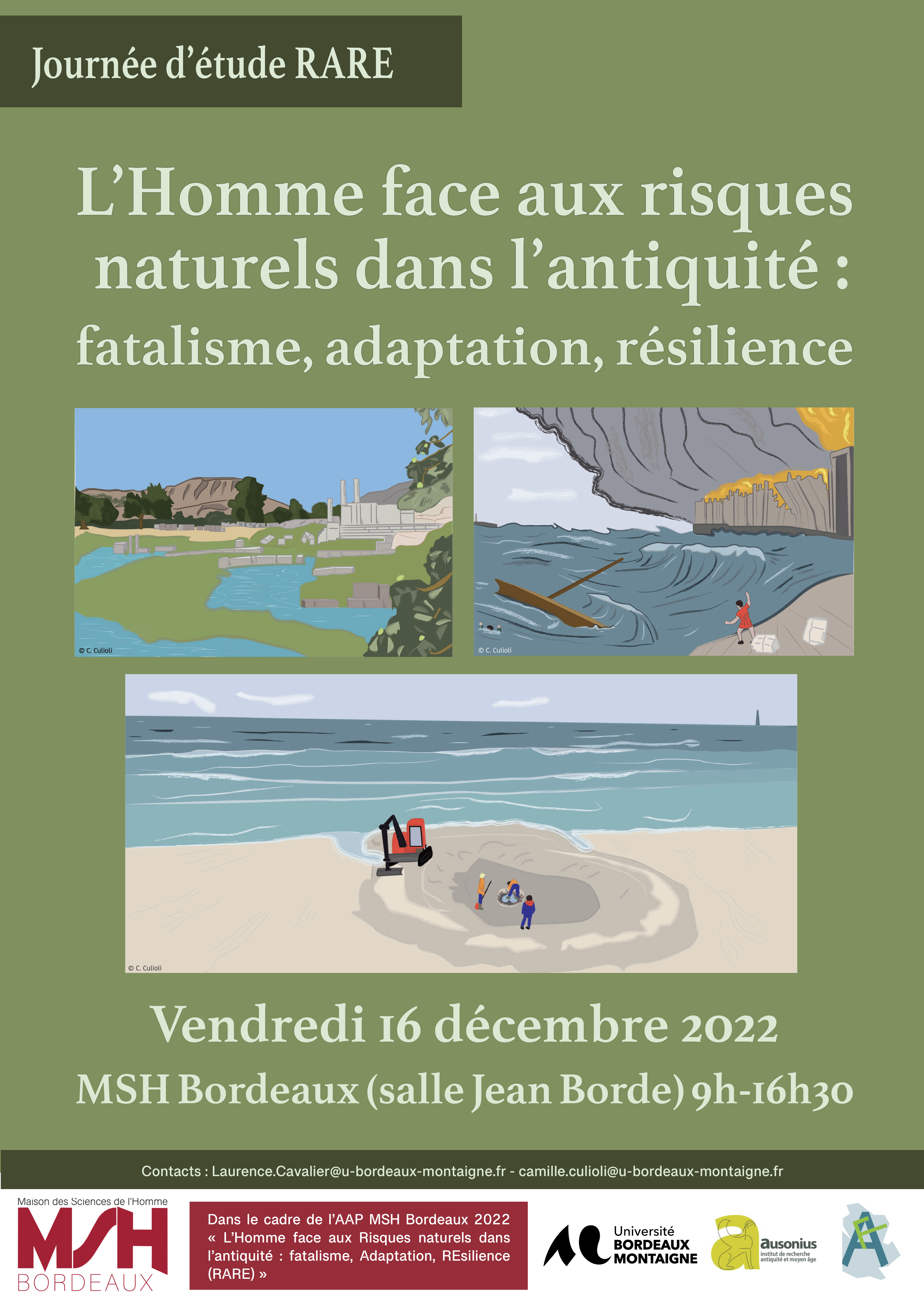
study day : Man faced with natural risks in antiquity: fatalism, adaptation, resilience
MSH Bordeaux, December 16, 2022
“Delphi, the rocky Pythô of Homer”
Didier Laroche, Teacher-researcher at the National School of Architecture of Strasbourg (ENSAS), University of Strasbourg, UMR 7044, ARCHIMEDE, Didier.Laroche[@]wanadoo.fr
Keywords: Sanctuary, rocks, oracle, Delphi
The first impression that visitors to Delphi, but also specialists, gain from a stroll on the site located in the grandiose landscape of Phaedriades, around the ravine of Castalie, is that of a location exposed to all dangers: falls of rocks, landslides, landslides, earthquakes, etc. The traces left by these disasters are sometimes obvious: collapsed buildings, rebuilt, threatening tilt of many structures. It is customary to justify this exposure to risks by emphasizing the imperative need for the oracle to be established on a fault producing inspiring vapors ( το χάσμα της Γης ) despite an unfavorable geological context.
A certain number of historical and archaeological observations make it possible to call into question this fatalistic vision of the establishment of the sanctuary, in particular by showing that the geological phenomena of which we today only perceive the negative aspect, also expressed, in a vision where the sacred was one with the physical environment, a manifestation of the natural elements that the Delphians took into account in the shaping of the sanctuary itself. Especially in the early stages of the establishment of constructions, we notice that the fallen rocks play a leading role, both for the establishment of offerings and for providing the raw material for constructions. They are sometimes the object of worship or are shown with respect when they helped stop the Persian invasion. The recent destruction of the rocks that fell at Marmaria in 1905 reveals the contrast between the way antiquity and modern times looked at the rocks of Parnassus. We will show numerous examples, known or unpublished, which denote the capacity that those responsible for the oracle had to deal with the physical manifestations induced by the natural site.
